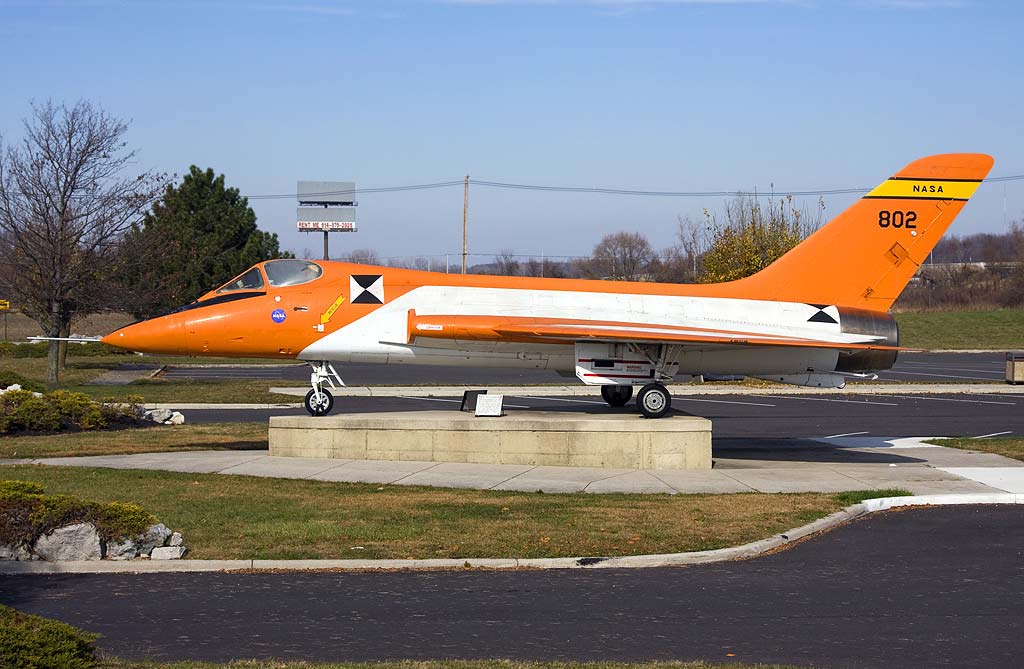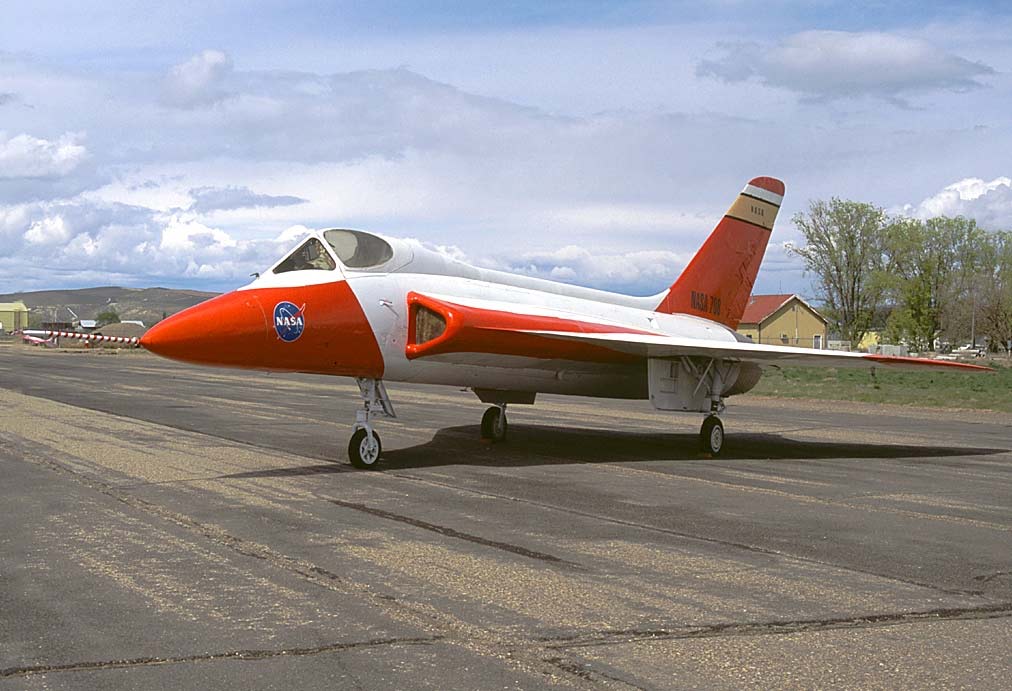The Douglas F5D Skylancer was a single-seat, supersonic interceptor aircraft, developed by Douglas Aircraft Company for the United States Navy.
In Brief
The Douglas F5D Skylancer, developed as an advanced version of the F4D Skyray, was a supersonic interceptor aircraft with a maximum speed of Mach 1.48. It featured a Pratt & Whitney J57-P-8 afterburning turbojet engine, producing 16,000 lb of thrust, allowing it to reach a service ceiling of 57,415 feet and a range of 1,336 miles. The Skylancer had a length of 16.4 meters, a wingspan of 10.21 meters, and a height of 4.52 meters. It was equipped with four 20mm internal cannons and had provisions for AIM-9 Sidewinder or AIM-7 Sparrow air-to-air missiles. The F5D was notable for its aerodynamic design, featuring a pointed nose, triangular wing root-mounted intakes, swept-back wings with rounded tips, and a single vertical tail fin.
The Douglas F5D Skylancer was a prominent figure in the evolution of American supersonic fighters during the 1950s. Although it never entered service with the United States Navy, its development and testing contributed significantly to aeronautical research and influenced future aircraft designs.

History of the Development of the Douglas F5D Skylancer
The Douglas F5D Skylancer was designed by famous American aviation engineer Ed Heinemann as an evolution of the F4D Skyray. The project began with the F4D-2N, an all-weather version of the Skyray, and evolved into the F5D with a thinner, longer fuselage, slimmer, stronger wings, and aerodynamic refinements. The design was revised enough to warrant its own designation, the F5D Skylancer.
The first prototype achieved flight on April 21st, 1956, and exhibited good handling characteristics. However, the United States Navy’s interest in the F5D waned as it shifted focus to the Chance-Vought F8U Crusader. The Navy terminated its commitment to the F5D in March of 1957, after only four of the expected nine test aircraft were realized. These aircraft were then passed on to NASA for various aeronautical experiments during the 1960s, with the last flight of a Skylancer occurring in 1968.
Design of the Douglas F5D Skylancer
The F5D Skylancer’s design closely resembled the F4D Skyray but featured several significant improvements. It had a short, pointed nose cone with excellent downward visibility, triangular wing root-mounted intakes, swept-back wing mainplanes with rounded tips, and a single vertical tail fin. The overall length was 16.4 meters, with a wingspan of 10.21 meters and a height of 4.52 meters. The undercarriage consisted of three retractable, wheeled legs (two main and one nose).
The F5D was initially intended to carry a Westinghouse J40 turbojet engine but was revised to accommodate the more powerful Pratt & Whitney J57-P-8 turbojet engine, offering a maximum speed of 990 mph (Mach 1.48) with a range of 1,335 miles. The service ceiling reached 57,500 feet, with a rate-of-climb nearing 20,730 feet per minute. The aircraft’s armament included four 20mm internal cannons and support for up to 72 2-inch HVARs, as well as AIM-9 Sidewinder and AIM-7 Sparrow AAMs.
Performance of the Douglas F5D Skylancer
The Douglas F5D Skylancer’s performance was impressive for its time. The Pratt & Whitney J57-P-8 engine enabled a maximum speed of 988 mph, a service ceiling of 57,415 feet, and a range of 1,336 miles. The rate of climb was an astounding 20,730 feet per minute. The aircraft’s design and powerplant made it a strong contender in the supersonic interceptor role, although it never entered service.
Variants of the Douglas F5D Skylancer
The F5D Skylancer project resulted in only four prototypes, designated F5D-1. There were no other variants produced, as the program was canceled before it could progress to full-scale production.

Military use and combat of the Douglas F5D Skylancer
The F5D Skylancer did not see military service or combat, as the United States Navy canceled the program in favor of the Chance-Vought F8U Crusader. The four prototypes built were used by NASA for various research and testing purposes throughout the 1960s.
The Douglas F5D Skylancer, though it never entered military service, remains an important part of aviation history. Its advanced design and impressive performance characteristics contributed to the development of supersonic flight and influenced the design of future aircraft. The Skylancer’s legacy is evident in the progress and advancements it brought to the field of aeronautical engineering.
Back to the experimental aircraft section.